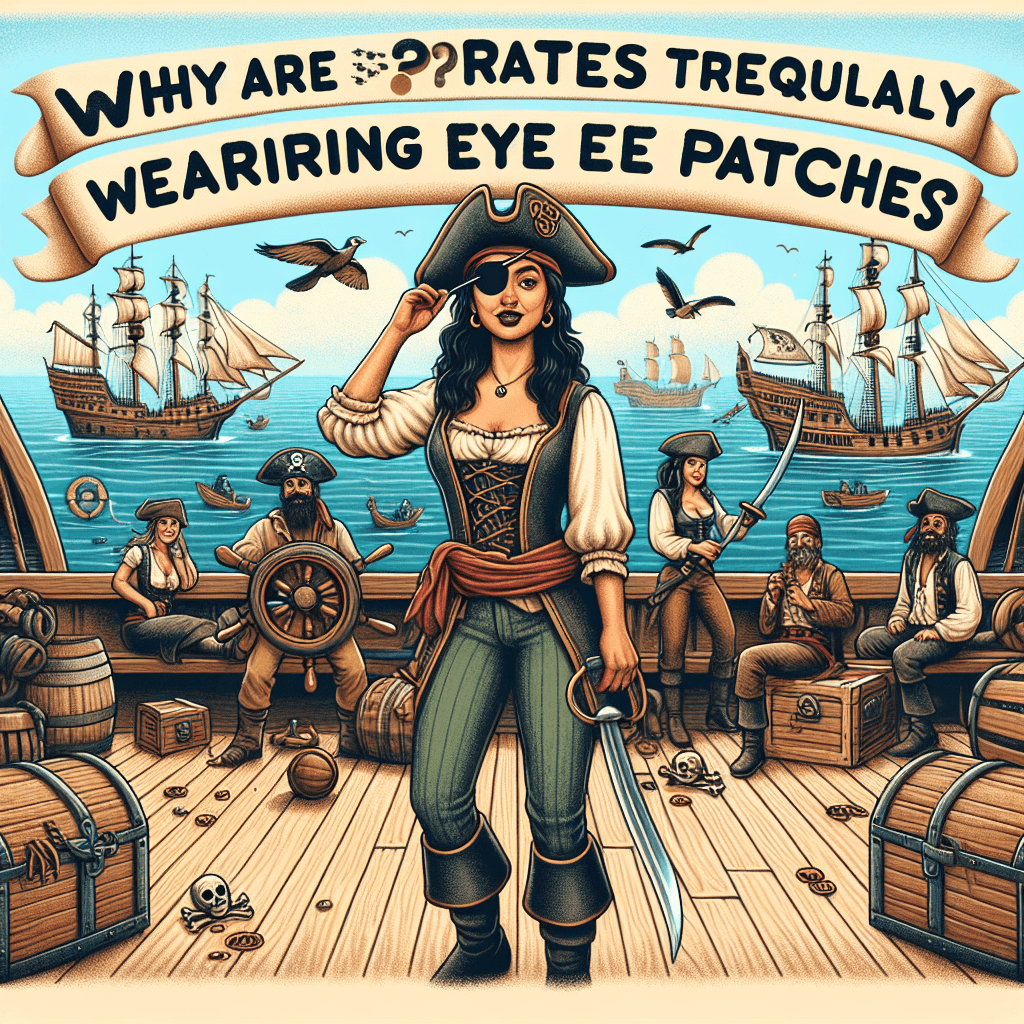Beyond the Stereotype: Why Are Pirates Typically Depicted Wearing Eye Patches
The eye patch is as synonymous with pirates as buried treasure. But is this iconic accessory just a dramatic invention, or is there a surprising, practical reason behind it?


Too Long; Didn't Read
Pirates may have worn eye patches not just for lost eyes, but to keep one eye adjusted to the dark, allowing for quick vision when moving between the bright ship deck and dark cabins below.
Beyond the Stereotype: Why Are Pirates Typically Depicted Wearing Eye Patches?
Ahoy, matey! Picture a pirate. Chances are, your mental image includes a weathered face, perhaps a tricorn hat, maybe a parrot, and almost certainly... an eye patch. This accessory is as synonymous with pirates as buried treasure and walking the plank. But have you ever wondered why this particular piece of cloth became such a defining feature? Is it purely a dramatic invention, or is there a more practical, historical reason behind the iconic pirate eye patch? This post delves into the fascinating theories and realities surrounding this enduring symbol, separating swashbuckling myth from potential nautical fact.
The Glare of the Sun, The Dark Below Deck
Life aboard a sailing ship during the Golden Age of Piracy (roughly 1650s to 1730s) involved constant movement between two vastly different environments: the blindingly bright upper deck exposed to the sun and sea glare, and the near-total darkness below deck in the cargo holds, cabins, or powder rooms. Human eyes take time to adjust to significant changes in light. Moving from bright sunlight into darkness can leave you effectively blind for several minutes until your pupils dilate and your photoreceptors adapt.
The Dark Adaptation Theory
This leads to the most plausible and widely cited functional reason for a sailor – pirate or otherwise – to wear an eye patch: preserving night vision in one eye.
- The Science: By keeping one eye covered with a patch while on the bright deck, that eye would remain fully adapted to the dark.
- The Advantage: If the sailor needed to go below deck quickly, especially during combat or urgent maneuvers, they could simply switch the patch to the other eye. The previously covered eye would provide instant clear vision in the dim conditions, eliminating the dangerous temporary blindness.
- Practicality: This technique would be invaluable for navigating treacherous stairs, locating supplies, manning cannons below deck, or engaging enemies in close quarters where split-second reactions were crucial. While direct historical documentation proving pirates specifically used patches for this purpose is scarce, the principle is sound and was even tested and found effective by shows like MythBusters. It remains the most compelling practical explanation.
Injuries and Limited Medicine at Sea
Of course, the sea was a dangerous place, and combat was brutal. Eye injuries were certainly a real risk for anyone living a life of maritime conflict and hard labor.
- Sources of Injury: Splinters from cannon fire, sword fights, grappling hooks, accidents with rigging, or even infections could all lead to the loss or damage of an eye.
- Medical Reality: Medical care aboard ships was rudimentary at best. If an eye was severely injured or lost, a simple patch would serve a practical purpose:
- Protecting the damaged socket from infection or further injury.
- Serving a cosmetic function, concealing a potentially gruesome wound.
So, yes, some pirates likely did wear eye patches because they had actually lost an eye. However, there's little evidence to suggest this was significantly more common among pirates than other sailors of the era facing similar dangers, or that it was the primary reason for the stereotype.
The Power of Storytelling
While practicalities like dark adaptation or actual injury offer logical reasons, the overwhelming prevalence of the eye patch in pirate imagery owes a huge debt to fiction.
- Literary Influence: Robert Louis Stevenson's 1883 novel Treasure Island features memorable seafaring characters, including the menacing Blind Pew. While Pew was blind, not merely patched, the association of visual impairment or distinct eye features with pirates began to solidify in popular culture.
- Visual Shorthand: As pirates became popular figures in theatre, film, and illustration, creators needed visual cues to instantly identify them. The eye patch, along with elements like peg legs and hooks, became exaggerated symbols – easy visual shorthand for a rugged, dangerous life at sea. Over time, this stereotype became deeply ingrained in our collective imagination.
Conclusion: Fact, Theory, and Fiction
So, why the eye patch? The enduring image of the one-eyed pirate likely stems from a combination of factors. The dark adaptation theory presents a compelling, practical reason why any sailor navigating between extreme light conditions might have employed an eye patch. Actual eye injuries, a grim reality of life at sea, undoubtedly led some individuals (pirates included) to wear patches for protection or cosmetic reasons. However, the sheer ubiquity of the eye patch in pirate lore owes much to its power as a visual trope, cemented by centuries of storytelling. While perhaps not every pirate swaggered around with one eye covered, the patch remains a potent symbol, hinting at both the practical challenges and the romanticized dangers of life under the Jolly Roger.


